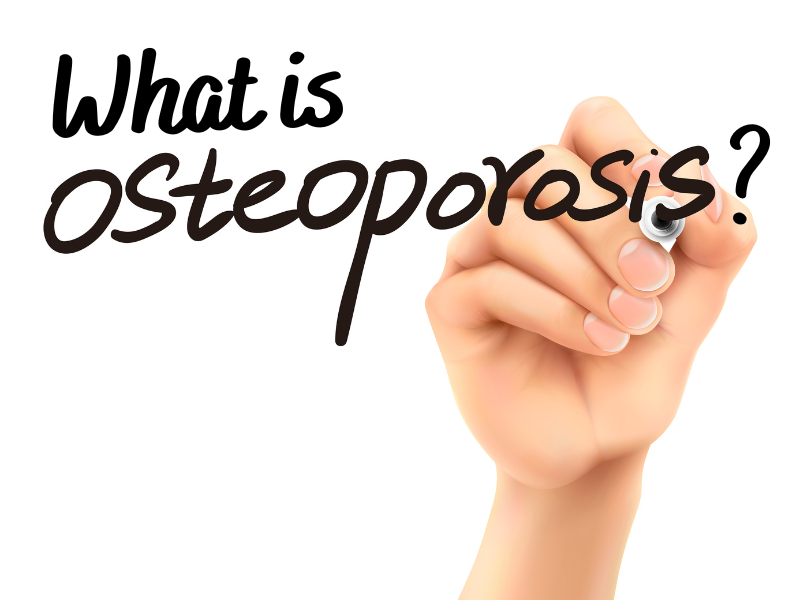
In this article, Naomi Albertson, M.D., explains what osteoporosis is, reviews some facts about osteoporosis, and discusses a few risk factors.
What is osteoporosis?
Osteoporosis is a disease that affects men and women. It is due to losing too much bone, making too little bone, or both. As a result, your bones become weak and may break from even a minor fall.
When you think about staying healthy, you probably think about making lifestyle changes to prevent conditions like cancer and heart disease. Keeping your bones healthy to prevent osteoporosis may not be at the top of your wellness list. But it should be. Let’s review some facts about it below.
-
-
- 52 million people have low bone density or osteoporosis.
- About one in two women, and up to one in four men over the age of 50 will break a bone due to osteoporosis.
- ½ of all patients with osteoporosis will not meet WHO criteria for dx with BMD alone.
- Half of all Americans over age 50 have low bone density or osteoporosis.
- 25% of hip fractures are associated with death within 1 year of the injury (due to complications)
- Fractures hurt and limit independence!
- 1 out of 4 osteoporotic hip fractures result in long-term nursing home care, 1/2 of these are unable to walk without assistance.
- 2/3 of all vertebral fractures are not clinically recognized (they don’t cause any symptoms that bring you to the doctor).
- Presence of vertebral fractures increases the risk of future vertebral and NON-vertebral fractures INDEPENDENT of bone density.
- 2 million American men have osteoporosis, 3 million more are at risk.
- 1/3 of male hip fractures are related to osteoporosis and 1/3 of these men will not survive 1 year after fracture.
-
Surprisingly, your bones are not hard and lifeless. They are actually living, changing structures. Your peak bone mass usually happens between the ages of 18 and 30. The more bone you have at the time of peak bone mass, the less likely you are to break a bone or get osteoporosis later in life. After reaching peak bone mass, the balance between bone formation and bone loss might start to change. You may start to slowly lose more bone than you form. In midlife, bone loss usually speeds up in both men and women. For most women, bone loss increases after menopause, when estrogen levels drop sharply. In fact, in the five to seven years after menopause, women can lose up to 20 percent or more of their bone density.
There are a variety of lifestyle and heredity factors that put you at risk for developing osteoporosis.
Osteoporosis Risk Factors
- Age over 50 years
- Ethnicity
- Lifestyle factors
- Family history of osteoporosis
- Taking certain medications
In the next article I will discuss how the diagnosis of osteoporosis is made and the prevention of osteoporosis in a future article.
